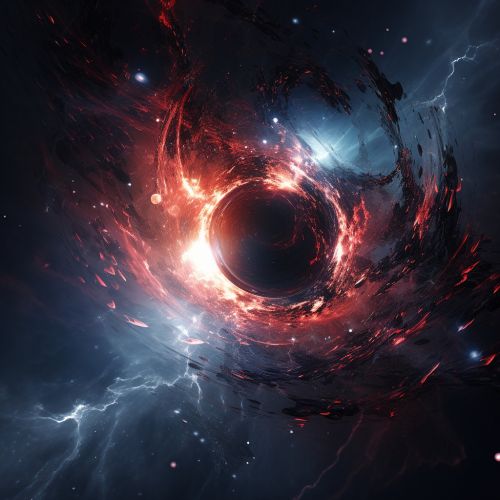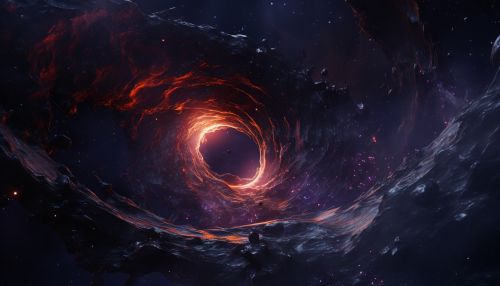The Physics of Quantum Mechanics in Black Holes
Introduction
Quantum mechanics, a fundamental theory in physics, describes nature at the smallest scales of energy levels of atoms and subatomic particles. When applied to the study of black holes, it provides a fascinating and complex perspective on these cosmic phenomena. This article delves into the physics of quantum mechanics in black holes, exploring the intricate relationship between these two areas of study.


Quantum Mechanics: A Brief Overview
Quantum mechanics is a branch of physics that deals with phenomena on a very small scale, such as molecules, atoms, and subatomic particles like electrons and photons. It is a fundamental theory in physics that provides a description of the dual particle-like and wave-like behavior and interactions of energy and matter. Quantum mechanics differs from classical physics in that it introduces the concept of wave-particle duality, the idea that all particles also have wave characteristics.
Black Holes: A Brief Overview
A black hole is a region of spacetime where gravity is so strong that nothing, not even particles or electromagnetic radiation such as light, can escape from it. The theory of general relativity predicts that a sufficiently compact mass can deform spacetime to form a black hole. Black holes are typically characterized by the "event horizon," a boundary in spacetime through which matter and light can only pass inward towards the mass of the black hole.


Quantum Mechanics and Black Holes
The application of quantum mechanics to black holes has been a significant area of research in theoretical physics. The most notable theory that emerged from this field is Hawking radiation, proposed by physicist Stephen Hawking in 1974. Hawking radiation is theoretical radiation that is predicted to be emitted by black holes, due to quantum effects near the event horizon.
Quantum Field Theory in Curved Spacetime
Quantum field theory in curved spacetime is a branch of quantum field theory that generalizes the quantum field theories of quantum electrodynamics (QED) and quantum chromodynamics (QCD) to curved spacetime. It is the natural framework for the quantum theory of the early universe and for quantum effects in black holes.


Quantum Gravity and Black Holes
Quantum gravity is a field of theoretical physics that seeks to describe gravity according to the principles of quantum mechanics. The current understanding of gravity is based on Albert Einstein's general theory of relativity, which is formulated within the framework of classical physics. On the other hand, the non-gravitational forces are described within the framework of quantum mechanics, a radically different formalism that describes phenomena on the smallest scales of energy levels of atoms and subatomic particles. The necessity of a quantum mechanical description of gravity follows from the fact that one cannot consistently couple a classical system to a quantum one.
Black Hole Thermodynamics
Black hole thermodynamics is the area of study that seeks to reconcile the laws of thermodynamics with the existence of black-hole event horizons. As the study of the statistical mechanics of black-body radiation led to the advent of the theory of quantum mechanics, the study of the statistical mechanics of black holes has had a deep impact upon the understanding of quantum gravity, leading to the formulation of the holographic principle.


Conclusion
The physics of quantum mechanics in black holes is a complex and fascinating field, offering profound insights into the nature of the universe. From the theoretical prediction of Hawking radiation to the study of quantum gravity and black hole thermodynamics, this field continues to push the boundaries of our understanding of the cosmos.
